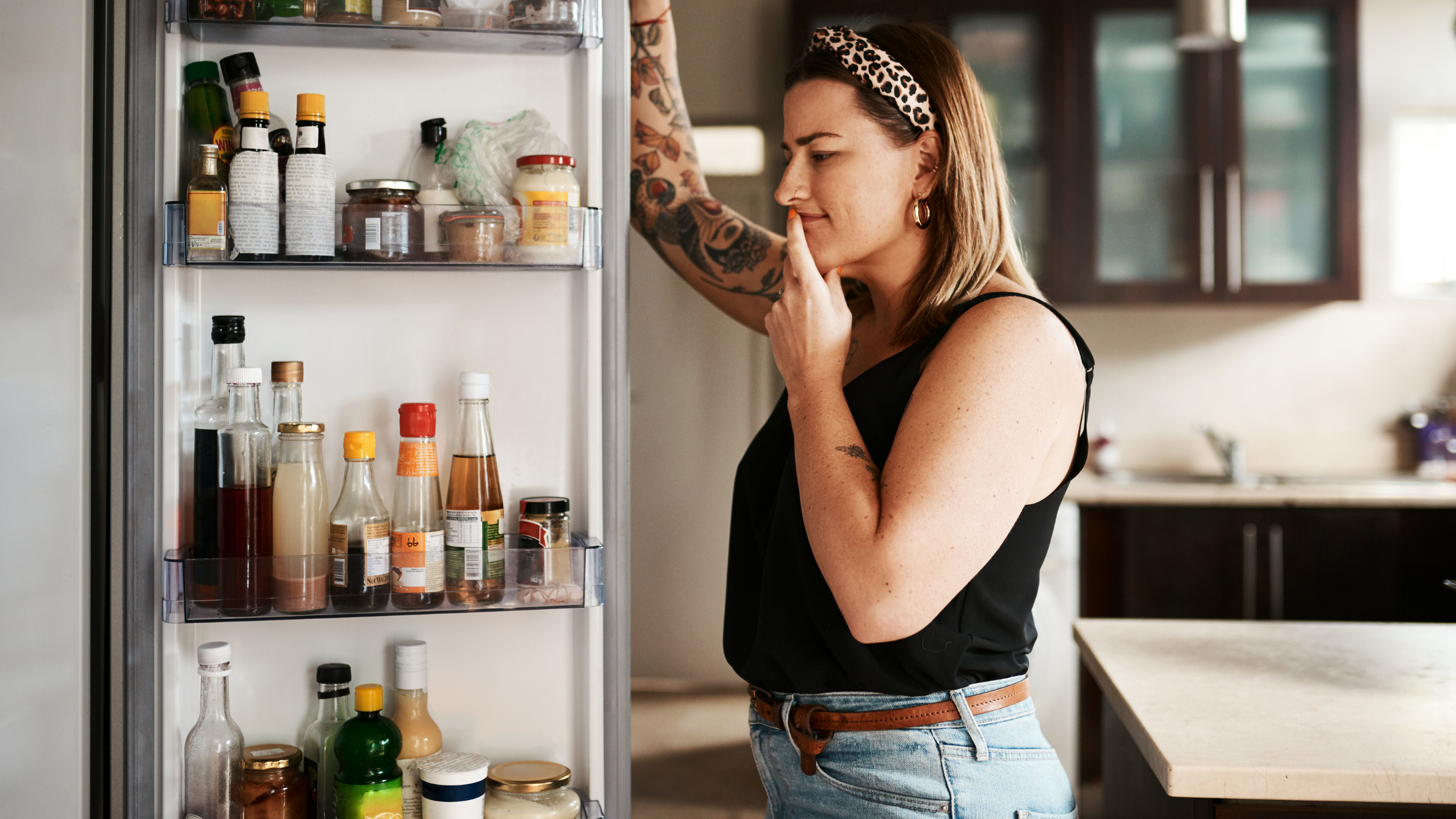Is Your Gut Influencing Your Food Cravings?

(Photo: PeopleImages/gettyimages.com)
If you’ve ever wondered where those can’t-be-stopped cravings for crunchy foods, sweet treats or even fresh veggies are coming from, there are a lot of potential culprits. Everything from your sleep to your vitamin and mineral intake to your hormones can wield influence. However, your cravings may not be so mysterious. It might be all in your gut.
According to recent research, your gut might be what’s driving the foods you choose to eat (or the foods you can’t stop thinking about). Here’s why you may be so dead-set on eating a salad or munch on some chips.
Changes to your gut microbes may prompt different cravings
You know what happens in the gut doesn’t stay within the digestive system. Even slight changes in your gut’s makeup or health can influence your sleep, energy levels and mental health. So, when it comes to cravings, it’s almost not surprising that the gut is involved.
But the gut may wield some pretty significant influence over cravings of all kinds. Researchers at the University of Pittsburgh examined mice in a study published in Proceedings of the National Academy of Sciences, taking a close look at how the gut might influence an individual’s preferred diet.
Over the course of the study, the researchers gave mice cocktails of microorganisms to 30 mice from three species, introducing gut microbes that they lacked. The mice were divided into three categories based on their unique natural diets.
After the gut microbes took hold, they altered the dietary preferences of the mice in all three groups. The mice wound up choosing food rich in certain nutrients, and those nutrient choices varied among the groups. Because the mice had different bacteria in their microbiomes, they also had different levels of certain nutrients, like the amino acid tryptophan (which you likely know as the molecule that makes you feel sleepy after eating turkey).
Those varying levels of bacteria and nutrients shaped what the mice chose to eat. Specifically, the tryptophan levels appeared to alter a mouse’s preference for carbohydrates – meaning different bacteria present in the microbiome can shift how humans might approach carbs, too.
While researchers didn’t look beyond tryptophan or other kinds of cravings in this initial study, the findings suggest that your gut microbes might influence signals to the brain about the nutrients you need. For example, having higher tryptophan levels may lead you to crave carbs, while you might crave something totally different if your tryptophan is low.
How researchers think gut microbes influence food cravings
Previous research pinpointed the gut as a key player in hunger pangs, with the gut signaling the brain via the vagus nerve (or, as it’s often called, the gut-brain axis). And when it comes to cravings, a similar phenomenon might be happening.
As your gut digests food, molecules are created as byproducts of the digestive process. Those molecules can send signals to the brain, letting you know when you’re full or need to keep eating. However, they can also alter the messages your brain is getting – meaning your gut’s microbes and molecules might tell your brain that it wants particular nutrients.
That’s what the study’s researchers think might be happening, at least. Your gut may be changing your cravings based on the kinds of microbes currently hanging out in your gut. And the foods you eat, along with the kinds of bacteria present in your microbiome, may influence the kinds of cravings signals you’re getting.
What this research means for your cravings
This study confirms what many scientists have suspected and speculated about for years: The gut’s microbes can influence an individual’s preferred diet. And it’s the first time the theory has been tested in organisms beyond fruit flies.
However, it’s important to note that because this is the first animal study on the potential link between gut microbes and food cravings or altered dietary preferences, the findings are preliminary. And human guts have yet to be studied in this way.
Before you start turning to your gut when cravings strike, it’s better to keep overall gut health and a well-rounded daily diet in mind. As Dr. Charles Tabone, N.M.D., of Los Angeles based Pause Studio, explains, “The things that feed your gut well are insoluble fibers (fiber in general), leafy greens, cruciferous vegetables; these types of things are food for microbes. Even the connective tissue of animals is something that your digestive tract and microbes can use to create short-chain fatty acids.”
Wondering where to start? “It all comes back, in my books, to high-quality food sources,” Dr. Tabone says.
To learn more about foods that can foster a balanced microbiome, keep reading: